1. Computer Network
Computer Network is an integration of two or more than two computers. It means when computers or their associated devices are connected through a medium is known as a computerork. The medium through which computer systems are connected may be wired or wireless.
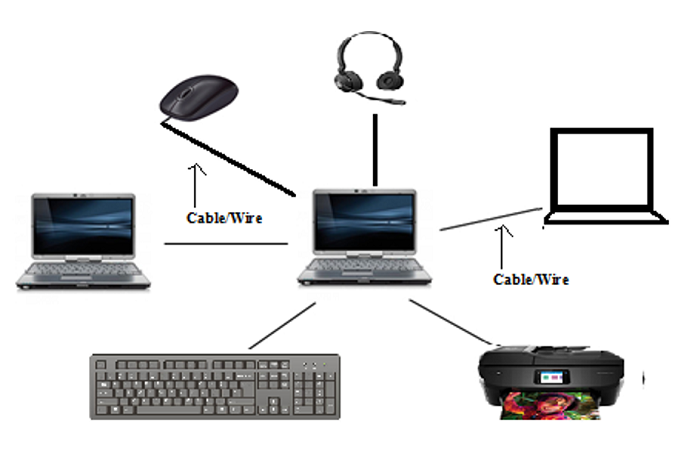
Figure: Wired Network (all the devices are connected through cable/wire)
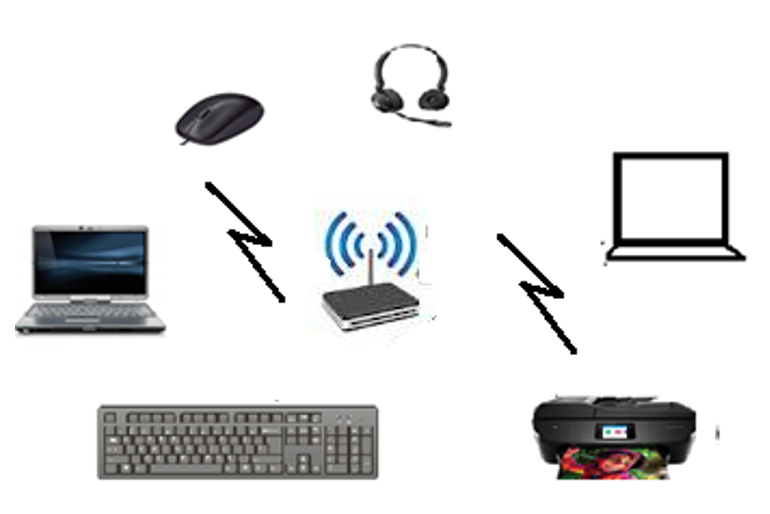
Figure: Wireless Network (all the devices are connected through Radio Waves)
The main objective of Computer Network is to share data/information from one device to another.
Network Devices
The network devices are devices that help to communicate between computer devices. The most popular network devices are Network Cables, Switch, Router, Bridge or Hub, etc.
1.1 Network Types
The basic types of network types are as follows -
- LAN
- MAN
- WAN
- PAN
i. LAN
The LAN stands for "Local Area Network", as its name implies that this type of network is dedicated to a specific geographic area. In the LAN, a group of computers belongs to the same organization within a small geographic area.
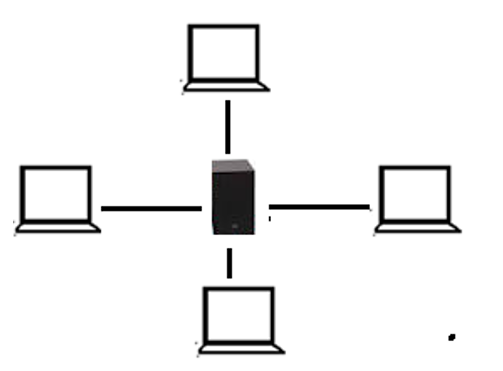
Figure: LAN
ii. MAN
A MAN stands for "Metropolitan Area Network". MAN connects multiple LAN nearby with high speeds.
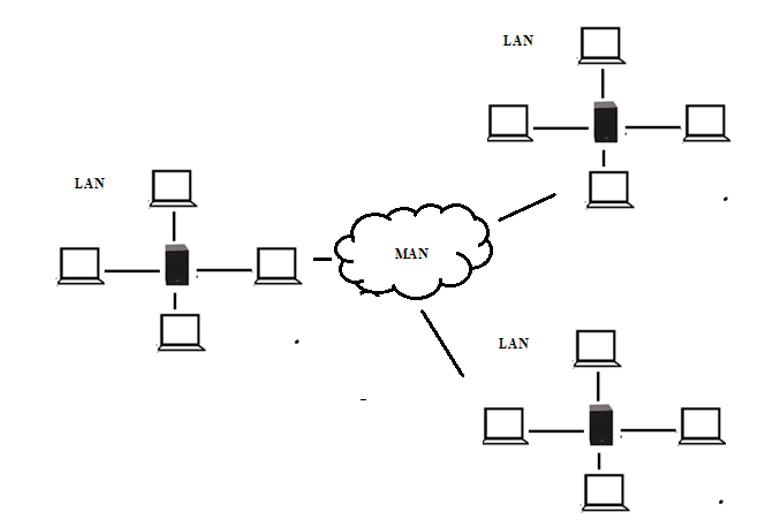
Figure: MAN
iii. WAN
A WAN stands for "Wide Area Network". It connects multiple LANs and MANs. This is a network that connects networks on large geographic distances. It is also known as a network of networks. The Internet is an example of WAN.

Figure: WAN
iv. WAN
A PAN stands for "personal area network". It is a network that fully dedicates to a person within a single building.
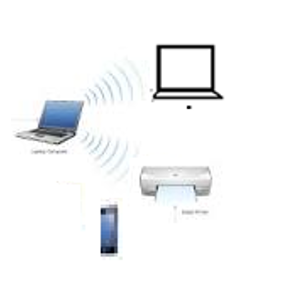
Figure: PAN
2. Internet
The Internet is the most influential platform for information and communication in the world. Now a day’s it is becoming the popular and main source of working of various organizations, offices, institutions, etc. As technology is enhancing day by day, parallel internet and its network system are getting advanced and internet speed has increased.
Definition: The Internet is a network. It is also known as the global computer network, which offers a range of information and communication services, consisting of interconnected networks using structured protocols.
The Internet is a global telecommunications infrastructure that offers access for millions of other, smaller networks; thus, the Internet is often referred to as networks. It helps users of computers to connect through device and remote platforms.
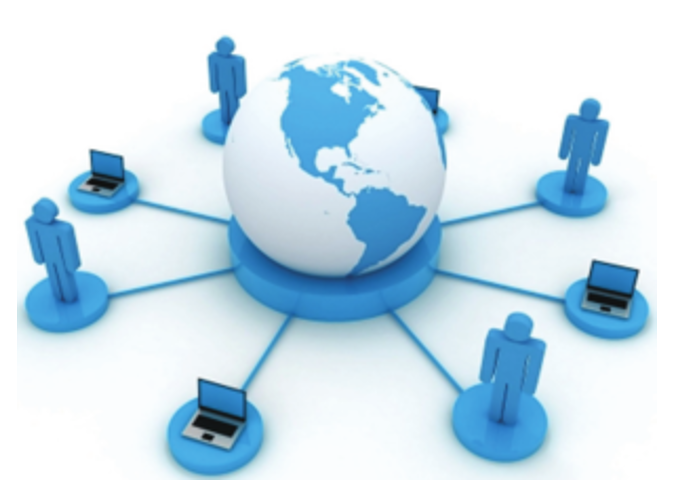
It is a network that links computers around the world using a common software protocol for data transmission and data reception. This protocol is known as TCP / IP which stands for the Internet Protocol / Transmission Control Protocol.
2.1 Internet – advantages and disadvantages
Followings are the key advantages of internet-
- It is a global network.
- Data/information can be shared instantly.
- It is a rich source of information.
- The Internet is a modern technology which gives awareness to the people.
- The best medium of communication.
- Rich source of entertainment.
- It helped to grow the online education system, medical services, online market, research, etc.
Disadvantages
The Internet is a vast technology which has many advantages but also has some disadvantages. The disadvantages are –
- There is a lot of misuse of technology.
- The longest use of the internet and computer system creates negative impacts on people's health.
- Privacy Expose.
- A lot of fraud.
- Rich source of viruses.
- Online threatening/ harassment.
3. World Wide Web
The World Wide Web or WWW is the largest network of computer systems, computer peripherals, and network devices. WWW is an internet-based service that works according to standard protocols. The protocol is a predefined structure of standard rules which defines how the data/information will transmit over the network. It also defines some set of standard rules for transmitting the file over the internet or large networks. So, WWW is a platform where data travels. It is a very large and complex network that integrates a smaller network and then frames a global web. It connects whole world networks and known as the World Wide Web.
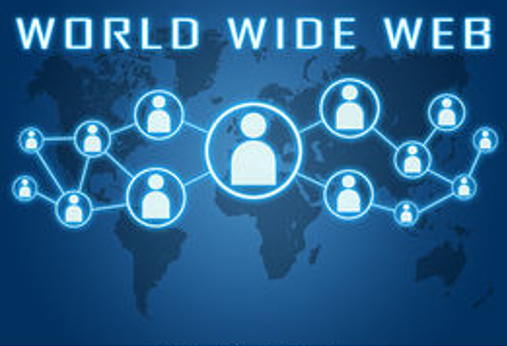
To access the data (information, files, etc) available on the web, we use a web browser.
The web browser is a program that connects the user to the internet server to access data. Most popular web browsers are Internet Explorer, Google Chrome, and Mozilla Firefox, etc. Using web browsers we can access the digital libraries that contain enormous data on computers around the world called Web Servers in the form of web pages.
4. Web Server
We know that the Web is used to transmit the data from one computer or node to another node available on the network. The data which is available on the internet or network is stored at the server which is known as the webserver. Web Servers are special and highly configured computers that can store a large amount of data. The web servers have a special type of processors that can process multiple processes of users in Nano, Mili, and Microseconds.
How it works - Web server is a special computer system running on HTTP (Hypertext Transfer Protocol) through web pages. The web page is a medium to carry data from one computer system to another. The working of the webserver starts from the client or user. The client sends their request through the web browser to the webserver. Web server takes this request, processes it and then sends back processed data to the client.
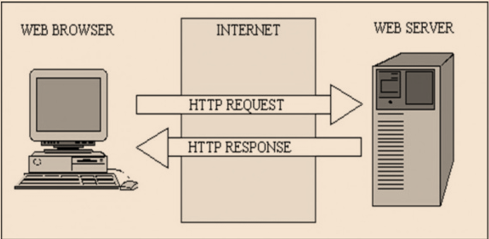
The server gathers all of our web page information and sends it to the user, which we see on our computer system in the form of a web page. When the client sends a request for processing to the web server, a domain name and IP address are important to the webserver. The domain name and IP address are used to identify the user on a large network.
5. Web client
A web client is a program or computer application that runs on a user's/client's computer and communicates with the webserver. Web client sends the user's request to the server for processing through the web browser.
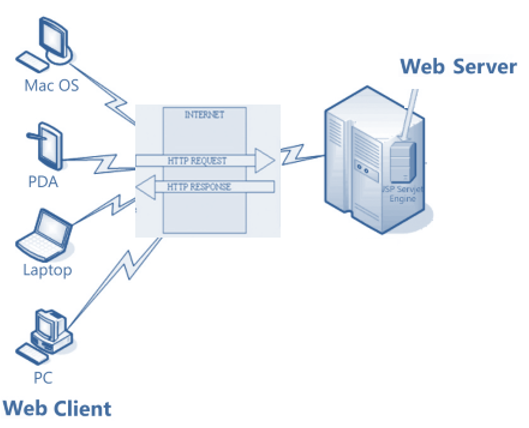
The HTTP protocol is used to carry the user's request as an HTTP request and server response as an HTTP response in the form of the web page to the client.
6. Website
A website is a collection of web pages. Thus, all the web pages of a web site are linked with one another using hyperlink. The website can access using its address is called a web address while accessing web pages the user clicks on the hyperlink. Hence, all the web pages of a website are connected through the hyperlink.
Example of a website address is – www.cbse.nic.in
Hyperlink
A hyperlink is a reference word, expression, or picture that we can click on in the current web page to move to a new web page or a new section of a website.
When we open a website its main page or first page appears on the computer screen which is known as the Home page of the website. A website contains other pages also, these pages are WebPages. Technically, the website is designed by web developers/ developers.
Web developer
The web developer is a software engineer or technical expert who develops website using scripting and programming languages? The web site is owned and updated by an individual, company, or organization. After developing the website, web developers launch it on the live web server so that every member on the internet can access it anywhere and anytime. As the website is a dynamically moving and changing entity so after it’s successfully launched, it is managed by Web developer regularly; today web sites generally change on a daily or even hourly basis.
Components of a Website
- Website Title: A suitable title of a website helps the search engines to find it on the internet and retrieves the required information.
- Web Page Contents: A website's web page includes the web page title, URL, web page contents all form part of a web page's composition.
- Website Graphics: Use web graphics optimized for maximum download speed, because web hosting space influences website performance.
- Color Contrast: When the websites are used to collect particular intent or subject-related information. This is important to ensure the quality of the pages is portrayed. So, visitors to the website will have no trouble reading a web page. As often when we pick a color scheme for our website we forget that there are people with impaired vision and lack of color.
7. Web page
A Web page is an electronic page of a website. Without a webpage, we cannot think about the website. Simply, it can be understood as a page in a book. A web page is a basic unit of every web site. The webpage contains information in the form of text, image, graphics, and videos, etc.
- Static web page - A static web page which is also called a flat page is a web page that is provided exactly as stored on the webserver to the user. A static web page shows all users with the same details, these versions are available and the server is configured to do so. These web pages are ideal for material that never needs to be modified, or occasionally.
- Dynamic web page - A dynamic web page is a page that needs to be refreshed every time it opens to view the site's updated content in any of the web browsers. The dynamic web page is the most attractive as compared to the static web page. Nowadays, dynamic websites are designing with the help of dynamic web pages.
8. Web browser
The web browser is an application that runs on the internet or network and transmits the user’s request to the server and server’s response to the user. Thus, it works on web documents. Generally, web documents or web pages are written using HTML, the main function of the web browser is to translate and display HTML contents on the user’s computer screen. The contents display in the form of text, images, tables, videos, graphics, etc. Web browser facilitates multiple features like email, internet relay chat, Usenet news, and so on. Most of the leading web browser support for multiple tabs opening at once.
The most popular web browsers are – Internet Explorer, Google Chrome, Mozilla Firefox, Opera, etc. The following images show the web browser’s with their icon.

The Web browser help users by following commands to perform some necessary and most usable functions-
Command | Function |
Home | Starting page |
Back | Go to previous page |
Forward | Move to next page |
Prints current page | |
Stop | Stop to load a page |
Reload | Refresh/redisplays current page |
Search | To search about users query |
9. Blogs
A blog or “Weblog” is a publication of personal views, thoughts, and experience on web links. It is a kind of personal diary note about an individual. The person shares their happening in a person’s life on the internet using blogs. The contents published on a blog are organized in a reverse manner, it means recent posts appear first and the older posts are further downwards.
Blogger – a person who posts a blog in the form of text, audio, video, weblinks, etc is known as a blogger. Bloggers have followers who follow them to get instant messages post by the blogger.
In most cases, celebrities, business tycoons, famous politicians, social workers, speakers, etc are the successful blogger because people follow them to know about their success stories and ideas.
The most popular blog sites are -
- https://wordpress.com
- https://www.wix.com/start/blog
- https://extensions.joomla.org/category/authoring-a-content/blog/
10. Newsgroup
A newsgroup is an online discussion about a person, organization, organization, or theme. By sharing text messages, photographs, videos, and other types of digital material, newsgroups allow remotely linked users to access, share, discuss, and learn from their subject of interest.
By sending an email address, users can join for free and the category usually consists of many topics based on the main subject. The subscriber can post messages in a specific topic that is either automatically available in open newsgroups or can be seen in groups by authorized members.
All subscribers who participate or follow a specific newsgroup will receive notice of notifications and updates. Also, articles, stories, topics, etc inside the newsgroup could be read via a free newsreader app.
Newsgroups are divided into conceptual structures, with the newsgroup name's suggesting the main subject theme and sub-categories identified by a sub-theme tag. Several subjects have several subtopics stages. Some types of subject are: news, soc (society), rec (recreation) research (research), comp (computers) etc. Users can add newsgroups to existing ones react to previous posts and build new newsgroups.
11. HTML (Hypertext Markup Language)
HTML is a Markup language which is used to create WebPages using HTML tags. WebPages play a vital role in the website. A Website is a collection of web pages. So, to develop a good website, it is necessary to create good and interactive WebPages. HTML is a good and efficient medium to develop WebPages.
Web developers or software engineers use HTML to develop websites. It means, if we want to develop a website, we need to learn HTML. To get in-depth with HTML, first of all, we understand the meaning of the terms associated with HTML. These are as follows–
Hypertext – refers to the hyperlinks to facilitate the HTML page. Through hyperlinks, web developers link or interconnect multiple sources on WebPages. Once, the user clicks on a hyperlink then they switch or can read another web document using a web browser.
Markup – markup refers to HTML tags which are used to define the web page layout and its element within the page.
HTML tags – Tag includes instructions about Web page to the web browsers with guidelines, like where to view text, images, and how to organize the document. Tags are always placed in < > angle brackets and closed with </ >. Some HTML tags have property to do not close with </ >.
Common HTML tags – the most common HTML tags used to define web page are as follows –
| HTML Tag | Meaning |
|---|---|
| <!doctype html> | refers that what type of contents the document contains |
| <html> | indicate about to start of an HTML document |
| <head> | refers about header information |
| <title> | tells about the title of your document |
| <body> | contains the text that will be displayed on Webpage |
| <p> | refers the paragraph |
12. Web address
A web address is an address of a website, file, or document on the internet. It shows the location of the file, directory, or website page. This address is also known as URL (Uniform Resource Locator).
For example – http://www.ira.edu.in
Every website has a web address. As we know, thousands of website is available on the internet and to access a particular web system amongst these on the internet, is very difficult. It means, without web address, users cannot find or connect to a web-based system on the network. To overcome this issue, a web address is used to identify the system uniquely on the internet. Once a web address or URL allocate to a web-based system cannot assign to another one.
13. E-mail (Electronic mail) and E-mail address
An email is a service of sending or receiving emails or messages in the form of text, audio, video, etc over the internet. Various service providers are providing email services to users. The most popular service providers in India are Gmail, Yahoo, Hotmail, Rediff, etc.
An email address for an email account is a unique ID. This email ID is used to send and receive mails over the Internet. To send or receive mail, an email address is a must. This process is similar to Post Office work. For example, if we sent a letter to anyone, it requires the sender & receiver’s address, without the sender address the postman will not be able to deliver a letter.
Each email address has two primary components: username and domain name. The username comes first, followed by the @) symbol and then the domain name.
Example of email address –
amitkumar@gmail.com
bbrajesh_pimg@rediffmail.com
garg.sumit@hotmail.com
anilsingh@yahoo.com etc
In the first example, amitkumar is a username, gmail is a name of service provider and .com is a domain name.
14. Downloading and uploading files from a remote site
Uploading refers to a process of transferring data (web pages, images, and files) onto a web server. In uploading, process data is being sent from clients or users' computers to the remote server. The main objective of uploading data or files on the server is to makes it centralize. It means, if data is available on the internet server can be accessible by everyone who is connected to the internet.
For example- when CBSE completes board exam results, they upload it on the remote server.
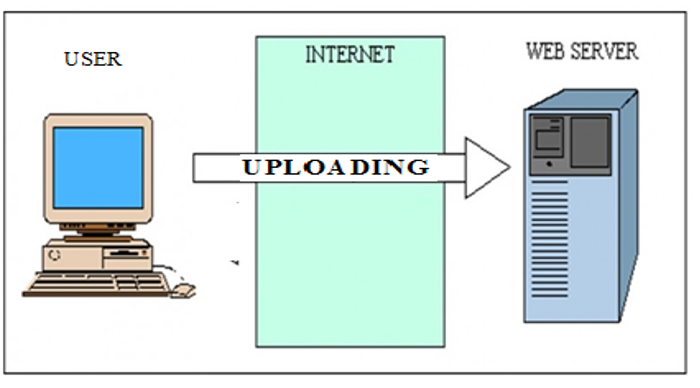
Fig: Data uploading process
Downloading refers to a process of getting data (web pages, images, and files) from a web server. This process starts when data is uploaded successfully on the remote server. Users can download the data or files from the remote server to their local host as per their needs using the internet.
For example- when CBSE declares that board exam result is available on a remote server then students can see and download their scorecard.
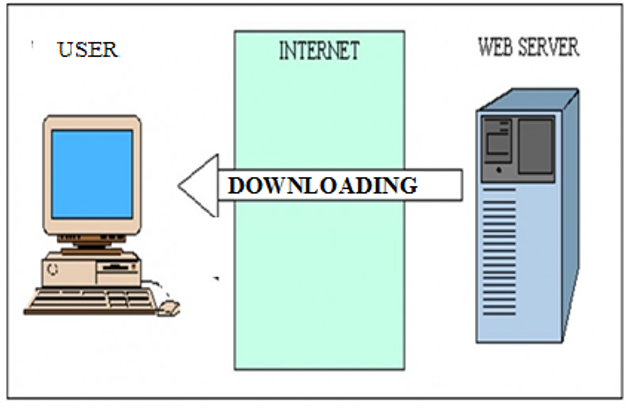
Fig: Data downloading process
It means, we’ll need to upload a file to make it available to everyone on the internet. When users copy this file to their computer they will download it.
Different types of Internet Protocols are used to upload and download files or data from the internet.
Various applications and websites are providing a user interface in which the upload button has given to click on it and upload files while the download button is to download the data. In most of the cases, the data uploading process is done by the system administrator or database administrator.
A system administrator is a person who is having the technical expertise to organize the computer system, system security, network management, etc while database administrator organizes the large database at servers end so that data can be easily stored on the server and downloaded by users without any problem

Comments
Post a Comment
Thank you